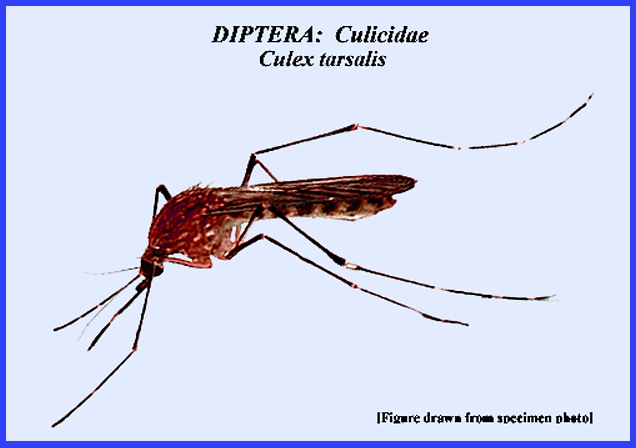File: <westernequineencephalitis.htm> <Medical
Index> <General Index> Site Description Glossary <Navigate to Home>
|
WESTERN EQUINE ENCEPHALITIS (Contact) Please CLICK on
Image & underlined links for details:
Symptoms
include serious sequelae among young children. Compared to the eastern form of the virus, mortality is below
4.2 percent confined mostly to elderly patients. Transmission
is by the Culex tarsalis and other Culex spp., Culiseta spp. and Aedes spp. mosquitoes. The Aedes spp. & #2.
also vector the virus to other mammals, humans and horses. Although no
vaccine for western equine encephalitis has been developed, there are some
therapeutic drugs available for the infection. = = = = = = = = = = = =
= = = = = = = = Key References: <medvet.ref.htm> <Hexapoda> Matheson, R. 1950.
Medical Entomology. Comstock
Publ. Co, Inc. 610 p. Service, M. 2008. Medical Entomology For Students. Cambridge Univ. Press. 289 p Legner, E.
F.
1995. Biological
control of Diptera of medical and veterinary importance. J. Vector Ecology 20(1): 59_120. Legner,
E. F. 2000. Biological control of aquatic
Diptera. p. 847_870. Contributions to a Manual of Palaearctic
Diptera, Vol. 1, Science Herald, Budapest. 978 p. |
